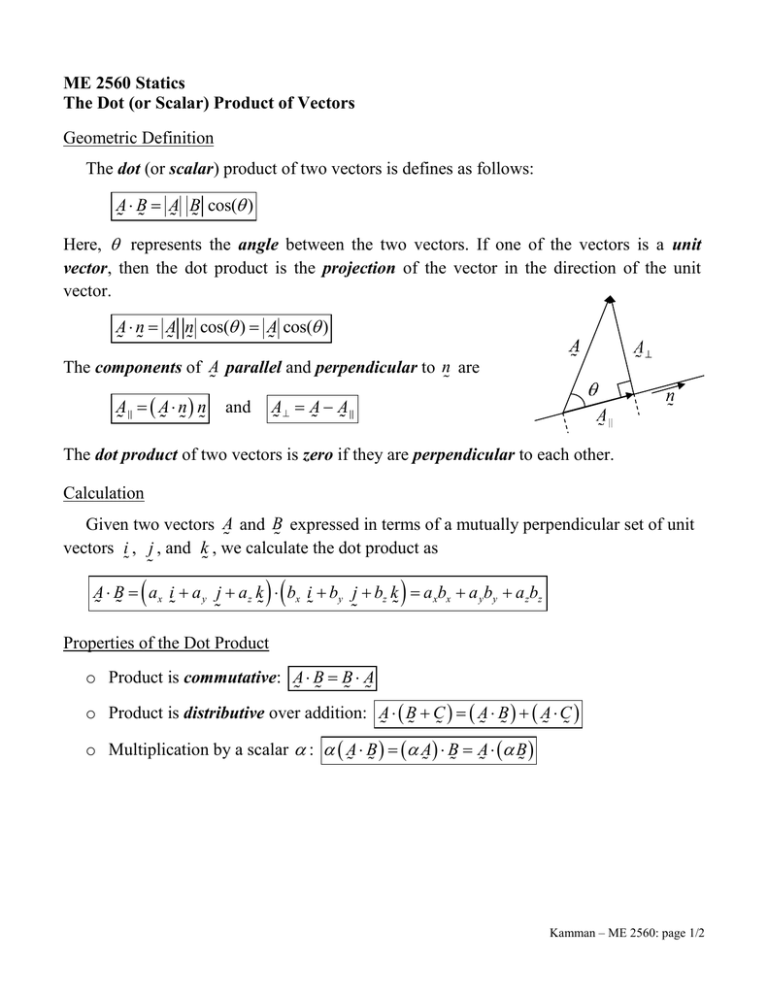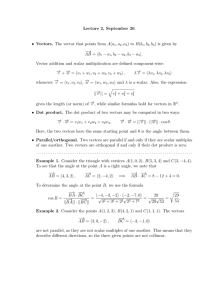advertisement

ME 2560 Statics The Dot (or Scalar) Product of Vectors Geometric Definition The dot (or scalar) product of two vectors is defines as follows: A B A B cos( ) Here, represents the angle between the two vectors. If one of the vectors is a unit vector, then the dot product is the projection of the vector in the direction of the unit vector. A n A n cos( ) A cos( ) The components of A parallel and perpendicular to n are A A n n A A A and The dot product of two vectors is zero if they are perpendicular to each other. Calculation Given two vectors A and B expressed in terms of a mutually perpendicular set of unit vectors i , j , and k , we calculate the dot product as A B ax i a y j a z k bx i by j bz k a xbx a yby a zbz Properties of the Dot Product o Product is commutative: A B B A o Product is distributive over addition: A B C A B A C o Multiplication by a scalar : A B A B A B Kamman – ME 2560: page 1/2 Example 1: Given: Two vectors, A 10 i 2 j 8 k and B 3 i 7 j 5 k Find: The angle between the two vectors, . Solution: We can calculate the angle using the inverse cosine function A B 30 14 40 1 cos 2 2 2 2 2 2 10 2 8 3 7 5 A B 44.6548 44.7 (deg) cos 1 84 1 cos 118.085 Example 2: Given: A vector, A 10 i 2 j 8 k , and a unit vector n 72 i 76 j 73 k . Find: a) the angle between the two vectors, b) A the component of A parallel to n , and c) A the component of A perpendicular to n . Solution: a) We can calculate the angle using the inverse cosine function as before. 6 3 2 A n 8 1 (10 7 ) (2 7 ) (8 7 ) cos cos 1 cos 12.9615 102 22 82 A 51.8871 51.9 (deg) 1 b) A ( A n) n 8 72 i 76 j 73 k 2.29 i 6.86 j 3.43 k c) A A A 10 i 2 j 8 k 2.29 i 6.86 j 3.43 k 7.71 i 4.86 j 4.57 k Check: A A 2.29 i 6.86 j 3.43 k 7.71 i 4.86 j 4.57 k 17.6327 33.3061 15.6735 0 Kamman – ME 2560: page 2/2

